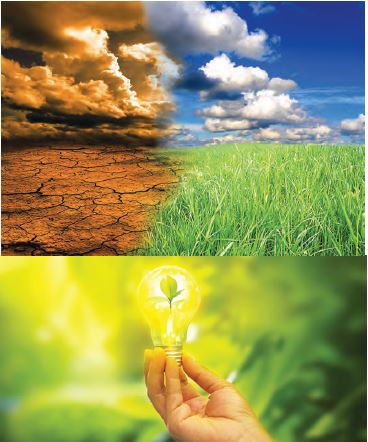 |
|
 |
STORY
DETAILS |
 |
|
| |
| |
 |
| Cover Story
|
 |
 |
| Textiles’ – the word brings up images of beautiful drapes – cotton, silk, chiffon, lace. Whether it is the material draped on the figurine of the lady f... |
|
 |
| |
read more... |
 |
|
 |
Lead Article
Textiles the word brings up images of beautiful drapes cotton, silk, chiffon, lace. Whether it is the material draped on the figurine of the lady from Mohenjadaro, the stylish drapes of Cleopatra, the ball dance gowns of the Victorian Era or the lovely dresses worn by our own queens and princesse...
read more... |
|
 |
| Articles |
 |
 |

|
|
Tapping Sustainable Energy Alternatives
|
|
|
The second lead article, which is also focus article, is written by Shri N Bhadran Nair. Citing a report of the World Health Organisation, the author has advocated for tapping sustainable energy alternatives
|

|

|

|

|
|
Financing Renewables in India
|
|
|
The third article is written by Shri P C Maithani, Adviser, Ministry of New and Renewable Energy. He has focussed on renewable energy resources
|

|

|

|
|
Steps to Achieve India’s Solar Potential
|
|
|
The special article is written by Sumant Sinha, Chairman and Managing Director of ReNew Power. He opines that India must also honour its global commitments on curbing greenhouse gas emissions
|

|

|
|
|
|
|
|
|
|
Indian Environmental Law and Climate Change
Shiju M V |
|
 India has a rich and well developed environmental law. The Indian constitution is one among the few constitutions in the world that has provisions on environmental protection. Articles 48 A and 51 A (g) inserted by the 42nd constitutional amendment act in 1976 imposes the duty of environmental protection on both the state and its citizens. However, the development of Indian environmental law is piecemeal and responsive to certain trigger events. Three trigger events can be discerned in the evolution of the Indian environmental law. The United Nations conference on human environment held at Stockholm in 1972 led to the enactment of many legislations in the field of environment. The enactment of Water Act, Air Act, Forest Conservation Act and the inclusion of provisions relating to the environment in the Constitution are examples of this. The Bhopal Gas Tragedy of 1984 exposed many lacunae in the Indian legal system. The legal battle that the victims had to fight, and are still fighting in various courts in the US and India is a case in point. A number of statutes were enacted in the wake of the tragedy, Environment (Protection) Act, 1988 being the most important. The Rio Conference in 1992 also saw some legislative activity in the Indian environmental scene. The Biological Diversity Act, 2002 was enacted to implement the Convention on Biological diversity adopted during the Conference. India has a rich and well developed environmental law. The Indian constitution is one among the few constitutions in the world that has provisions on environmental protection. Articles 48 A and 51 A (g) inserted by the 42nd constitutional amendment act in 1976 imposes the duty of environmental protection on both the state and its citizens. However, the development of Indian environmental law is piecemeal and responsive to certain trigger events. Three trigger events can be discerned in the evolution of the Indian environmental law. The United Nations conference on human environment held at Stockholm in 1972 led to the enactment of many legislations in the field of environment. The enactment of Water Act, Air Act, Forest Conservation Act and the inclusion of provisions relating to the environment in the Constitution are examples of this. The Bhopal Gas Tragedy of 1984 exposed many lacunae in the Indian legal system. The legal battle that the victims had to fight, and are still fighting in various courts in the US and India is a case in point. A number of statutes were enacted in the wake of the tragedy, Environment (Protection) Act, 1988 being the most important. The Rio Conference in 1992 also saw some legislative activity in the Indian environmental scene. The Biological Diversity Act, 2002 was enacted to implement the Convention on Biological diversity adopted during the Conference.
But a mere enumeration of the statutes and various constitutional provisions will not capture the essence of Indian environmental law. The stellar role being played by the Indian judiciary has strengthened the environmental jurisprudence in India.
|
|
|
|
|
|
|
|
|
|
|
 |

|
Regional Languages
|
 |
|
|
 |
|
Regular
Column |
|
J&K Window : |

|
|
Do you know? : What is Forensic Auditing |
Forensic auditing refers to the auditing with the main aim to employ accounting techniques and methods to gather evidence to investigate the crimes on financial front such as theft, fraud etc.

|
|
|
 |
|
 |
 |